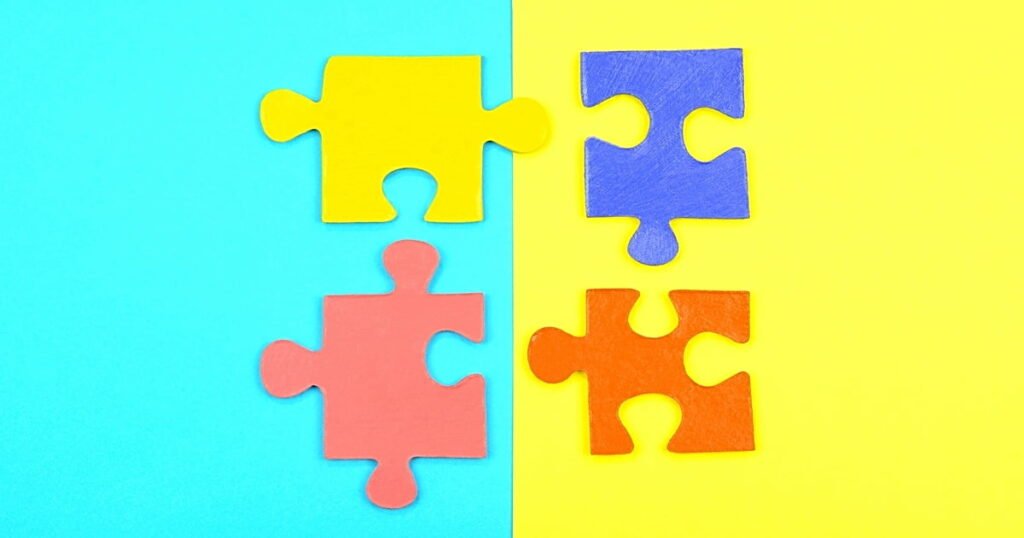Hear
NEW! Listen to article
4 B2B content types for stages of the buying journey

Content marketing has always been an effective way to attract and retain customers by creating and distributing content that is relevant to them.
This also applies to B2B companies. However, because the B2B buyer’s journey is more complex than that of a consumer, a more refined approach to content is required.
The B2B buyer’s journey is typically longer and involves multiple decision makers with different priorities. The content should therefore address their specific needs and concerns at each stage of the journey.
Additionally, B2B companies that only target a few key deals each year focus on building strong relationships with potential customers. The right approach not only highlights a product or service, but also demonstrates a good understanding of the buyer’s individual pain points and business challenges.
In this article, we explore four types of content for websites, landing pages, and other platforms and their importance at different stages of the buyer journey—from awareness to decision and beyond.
1. Educational content to raise awareness
During the awareness phase of the B2B buyer journey, customers may just be realizing the full extent of their pain point or problem. Educational content introduces a company to a potential customer as a trustworthy and knowledgeable resource on the topic.
Content in the form of webinars, tutorials, and guides allows customers to learn more about a company’s products or services. However, such resources go beyond mere advertising; The focus is on truly helping prospects better understand relevant larger issues while also addressing how a company might solve the prospect’s needs.
Webinars, for example, present specialist knowledge while addressing specific topics relevant to a target group. Tutorials and guides provide step-by-step instructions, demonstrating the value of a company’s offerings and how they can solve the challenges potential customers face.
When potential buyers engage with educational content, they become more familiar with a company’s approach and philosophy – making those buyers more likely to consider a company’s specific product or service as a potential solution.
2. Positioning content for research
Buyers who educate themselves and do additional research become more sophisticated. Now, You need more detailed information about the options available. With various resources available, they want to be sure that a particular company is an authority on their particular problem.
Imagine a software company that develops AI-driven solutions for companies in various industries. To showcase its expertise, the company publishes thought leadership articles, white papers, and blog posts on its website and in various industry publications.
These posts discuss emerging trends in artificial intelligence, machine learning and data analytics and demonstrate the company’s deep knowledge and understanding of the rapidly evolving technology landscape.
A balanced approach that is not heavy-handed builds credibility and trust. The company wants to be perceived as a reliable and helpful partner.
3. Comparison Content
At the decision stage of the B2B buyer’s journey, comparison content is a powerful tool to help companies close a sale.
By creating content that compares a company’s products or services to those of competitors, a company helps potential customers understand the essence of what makes it different or better. That can mean value. It can mean service. Perhaps it is due to the proprietary nature of the product or service.
An effective way to showcase a product or service is to create product comparison tables to highlight key features, functions and benefits. A clear and concise presentation allows customers to quickly understand the benefits of one solution over another.
Case studies can also help build trust and credibility. If a company shares real-world success stories about how a customer overcame a particular problem or achieved exceptional results, a buyer who is about to make a decision can expect a similarly positive outcome.
4. Testimonials and social proof to close the deal
Potential customers want to be assured that the offer they are considering actually delivers what it promises. Testimonials and social proof are an important way to confirm quality and reliability at every step of the buyer journey.
Testimonials in the form of customer reviews and feedback provide valuable insight into the experiences of previous buyers. Social proof harnesses the power of numbers and community validation; This includes metrics such as the number of satisfied customers, user reviews or recommendations from industry experts.
By strategically incorporating testimonials and social proof into their content marketing efforts, companies can effectively influence the perception of potential customers. Both serve as strong reinforcements of the value proposition, increasing buyers’ confidence in their choice and ultimately leading to higher conversions and customer loyalty.
* * *
Navigating potential buyers through the sales funnel is a multifaceted endeavor that requires a thoughtful mix of tactics and the right content for each step.
Building industry expertise and in-depth specialist knowledge is the foundation that strengthens trust and enables further tactics in the customer journey.
Comparison content highlights product value compared to competitors, helping to make informed decisions, while social proof through testimonials, reviews or case studies provides the final reassurance to gain a loyal customer.
More resources on buyer journey content
How to align content with the buyer’s journey to increase conversions
Effective Content Types for Each Stage of the Buyer Journey (Infographic)
How to create buyer-focused sales content that resonates
